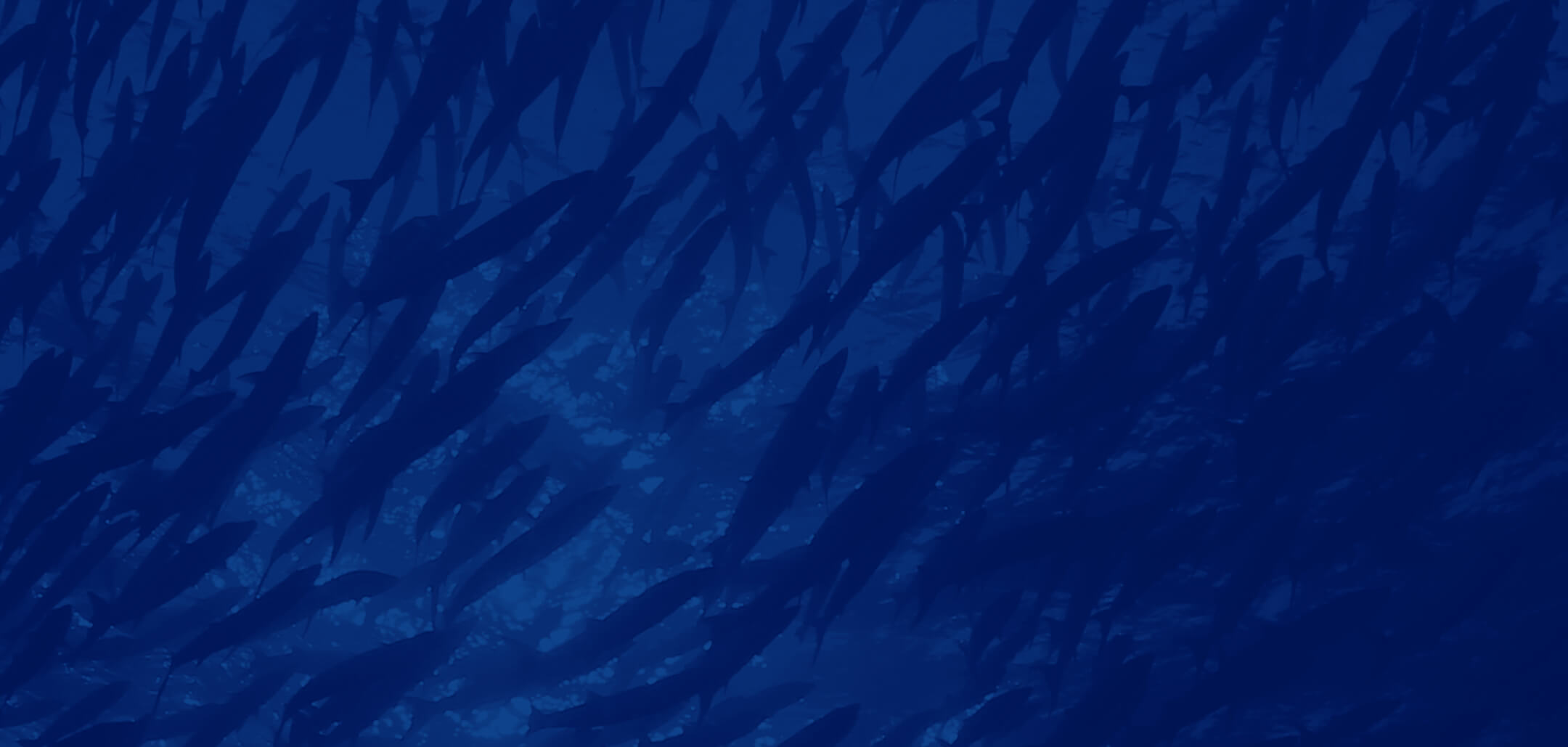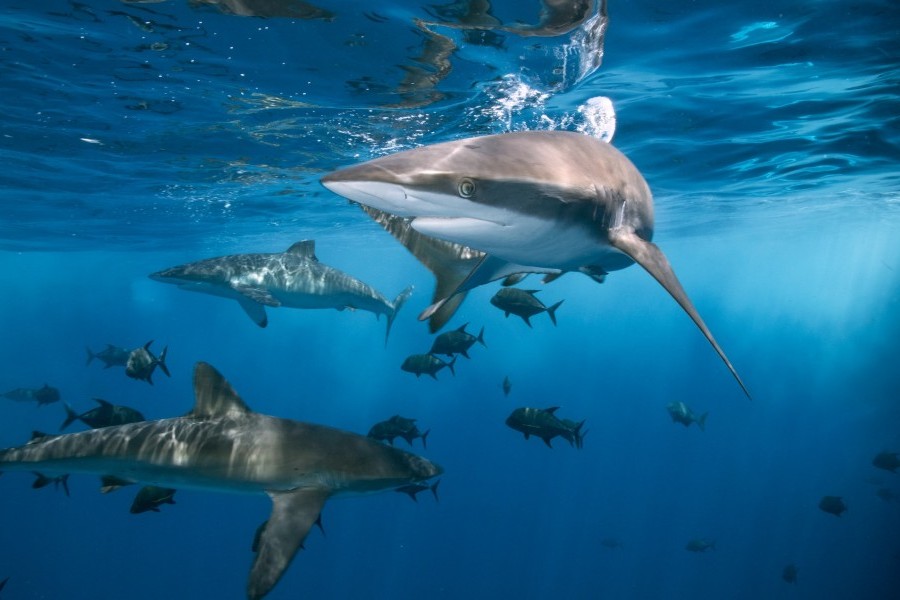THIS STORY RAN IN THE FALL 2022 ISSUE OF MOTE MAGAZINE. DOWNLOAD THE FULL MAGAZINE AS A PDF
In 2021, the International Union for Conservation of Nature (IUCN) Red List of Threatened Species assessed sharks and their relatives, rays, skates and chimeras, and found about one-third of all species were threatened with extinction. In that assessment, overfishing represented a universal risk to the populations of all threatened species.
New collaborative research from a team of international scientists dove even further into the interaction between fishing, international trade and shark population status. For nearly a decade, Dr. Demian Chapman—Director of Mote’s Sharks & Rays Conservation Research Program—has led the team, which includes researchers from Florida International University, BLOOM Association Hong Kong and Kadoorie Farm & Botanic Garden.
To track and monitor the global shark fin trade, Chapman’s team conducted DNA testing on about 10,000 small scraps taken from processed, imported fins sold in markets in Hong Kong and South China. The team’s goal was to better understand what species are in the trade and how common they are. By tracking this over time, they are able to inform decision makers about how well various management measures are working. Their research, published in summer 2022 in the peer-reviewed journal Conservation Letters, showed that 70% of species ending up in the global shark fin trade are at risk of extinction. In total, they found 86 different species in the trade. Sixty-one of those, more than two-thirds, are considered threatened with extinction. Results of this new study indicate species in this trade are much more likely to be in threatened categories.
The study found that the species that commonly end up in the fin trade are open-ocean, or pelagic, sharks, such as blue and silky sharks. However, the greatest number of species in the trade— and many of the most commonly sold—live in coastal areas, including blacktip, dusky, spinner and sandbar sharks. The researchers warn that, without management, many coastal species could become extinct.
“A few nations are protecting or sustainably fishing sharks and their relatives, but the majority are not for a variety of reasons,” said Chapman. “As a result, multiple sharks we found in the trade—such as smalltail, broadfin and various small hammerhead species—have been listed as Endangered or Critically Endangered. Listings raise awareness, but there are still no regulations protecting these species in significant areas of their range. Unless governments not currently having these regulations take steps to implement such management approaches in those areas, we are likely to experience a wave of extinctions among coastal sharks and rays.”
One way to encourage better species management within nations is to list them under the Convention on International Trade in Endangered Species of Wild Fauna and Flora (CITES)—an international agreement seeking to protect animals and plants from overexploitation driven by international trade. The 19th meeting of the Conference of the Parties (CoP19) to CITES is taking place in November 2022. This study will provide key evidence for the body’s deliberations by bringing the plight of coastal sharks to the attention of governments and showing only a small percentage of the overall trade in shark fins is currently regulated under the Convention.
If proposals to improve shark protections are adopted at CoP19, nations would be obliged to ensure that any export of listed species is legal, traceable and sustainable. “There is a range of management actions that nations can take to get coastal shark fishing under control and avert this extinction crisis,” said Chapman. “From changing fishing gear to creating protected areas to limiting catch, the solutions are out there.”
“Since our Founding Director, Dr. Eugenie Clark—the Shark Lady—began her work documenting shark populations in southwest Florida and around the world nearly 70 years ago, the core of Mote has been to push the frontiers of science in support of evidence-based, sustainable use of our shared ocean resources,” said Mote President & CEO Dr. Michael P. Crosby. “We plan to continue our vital work monitoring species commonly found in the shark trade, through the collaboration of innovative science, community engagement and resource management that together are critical to preventing extinction of these species.”
A rare encounter
One shark conservation solution is playing out in Belize, where Chapman and his colleagues have worked extensively to collaborate with local government and the fishing community to protect sharks in ways that are culturally and socio-economically suited to the local community. In 2021, Belize established new management areas totaling about 1,500 square miles of reef habitat that prohibited shark fishing. Now, fisherfolk that would have been targeting sharks to harvest are tagging them for research.
During a tagging expedition looking for tiger sharks in spring 2022, the combined team of local fisherfolk and researchers noticed something strange at the end of the line. It wasn’t a tiger shark at all, but rather, something completely unexpected: a Greenland shark!
Greenland sharks are slow-growing species that prefer cold waters, which leads to nearly all sightings of them in the Arctic and North Atlantic oceans. However, so little is known about them that nothing can be definitively ruled out about the species. Many experts believe Greenland sharks could be possibly trolling the oceans worldwide, just at far greater depths.
The sighting was the first of a Greenland shark in the western Caribbean. The edge of the atoll where it was found has a steep slope that drops from 1,600 feet to 9,500 feet deep, meaning there is cold water, which Greenland sharks need to survive.
After taking just a few pictures to confirm the sighting with other experts, the team immediately released the shark. While the team wasn’t expecting to ever see a Greenland shark, finding one shows how partnerships can pave the way for unexpected and intriguing new discoveries.


